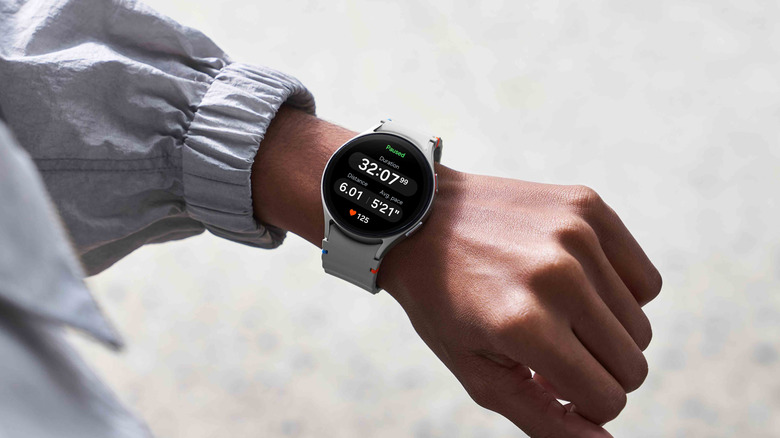Can Your Samsung Galaxy Watch Get Wet? The Wearable's Water Resistance Explained
Samsung's Galaxy Watches are among the best wearables on the market, going toe-to-toe with offerings from Apple, Google, Garmin, and other heavy hitters. As noted in our Galaxy Watch7 review, these watches are bolstered by AI and include plenty of powerful fitness and body tracking features to help you meet your health goals. They also let you use your phone less by sending notifications, messages, and calls to your wrist. But what if you're an aquatic athlete, or just someone who gets caught in the rain often? Can these premium smartwatches withstand a splash or a dunk?
As smart technology has matured, we've come to expect that our tech isn't as vulnerable to water as it used to be. The days of frantically putting devices in bowls of rice (which you shouldn't do) are largely over. These days, we expect our phones, earbuds, and more to come with some level of water and dust resistance. Samsung's Galaxy Watch lineup is no exception to the trend of water-resistant tech, and these wrist-mounted mini-computers are in fact some of the company's most water-resistant products. However, although you can rest assured most encounters with H2O won't harm a Galaxy Watch, it still has limitations. Here's what you need to know to keep your Galaxy Watch safe from water.
Most Galaxy Watches are water and pressure resistant
Most Samsung Galaxy Watch models are water and dust resistant, and are rated for atmospheric pressure. That means they can be splashed, rained on, or fully submerged for most activities. If you're taking your Galaxy Watch to the pool, you don't need to worry, and it can certainly handle things like doing the dishes, showering, or getting caught in the rain. It's only if you plan on taking it to greater depths during activities like sea diving you need to be concerned. Water and dust resistance is confirmed for the Galaxy Watch Ultra, Watch7, Watch6, Watch5, Watch4, Watch3, Watch Active, Watch Active2, Galaxy Fit, Fit2, and Fit E models.
To get into the technical specifications, the vast majority of Galaxy Watches are rated for IP68 dust and water resistance. The IP rating scale consists of two digits, with the first representing dust resistance and the second representing water resistance. The 6 in the Galaxy Watch's IP68 rating means it can withstand most fine dust particles that could harm your watch for a period of two to eight hours, while the 8 in that rating is the highest possible water resistance rating and means the device is fully protected against water. Note that this is only for freshwater, whereas saltwater may still damage the watch.
When it comes to water pressure, Galaxy Watches are rated at 5 ATM (units of atmospheric pressure). This means they can withstand submersion in up to 50 meters of freshwater for up to 10 minutes. The notable exception is the Galaxy Watch Ultra, which is rated for 10 ATM, which means it can be submerged 100 meters deep.
Galaxy Watches lose water resistance when damaged
Although one of the best Samsung Galaxy Watch features is their great water and dust resistance with IP68 and 5 ATM ratings, they lose much of their protection if damaged. If you notice any cracks anywhere on the watch, or any other physical damage, you should assume that water protection is compromised. When in new condition, the watch is protected against aquatic ingress, but physical damage can open a channel for water to seep in. If that happens, internal components are likely to be affected, leading to malfunctions or completely breaking the watch.
Additionally, tech experiences normal wear and tear over time, so if your watch is a few years old, you should treat it with more caution around water. While a watch that's several years old and otherwise has no damage is unlikely to be affected by a bit of rain or dishwater, you should take more care when swimming or doing other activities that submerge it for extended periods of time.


